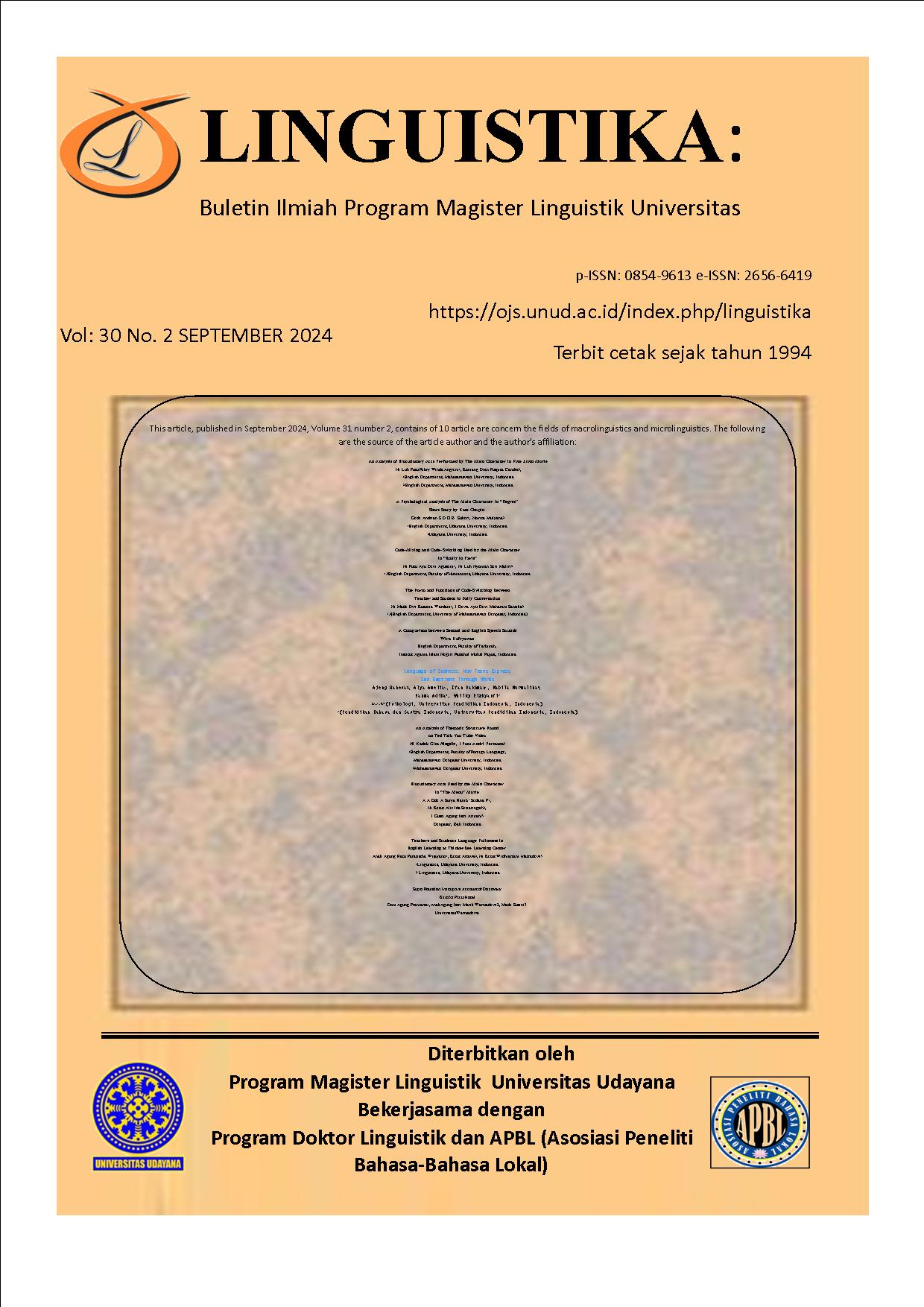The Form and Functions of Code-Switching Between Teacher and Student in Daily Conversation
Abstract
Code-switching is a language phenomenon in a society where people use more than one language interchangeably in their utterances. This study is focused on analyzing the forms of code-switching, contextual types, and functions of code-switching found in conversations between teachers and students at an international school in Bali. This research was conducted in a class of 15 students aged 3-7 years. Sources of data in this study were taken from everyday conversations conducted by teachers and students. For analysis, the researcher used the theory put forward by Wardhaugh (2006) to identify the type of code-switching used contextually and based on the analysis to identify the function of code-switching. In collecting data, this research uses field observation, and the qualitative descriptive method is used in analyzing the data. The results of the data found are for the form of code-switching found word form code-switching (34), phrases form code-switching (19), and sentences form code-switching (23). The types of contextual code-switching found in this research are situational code-switching (72) and metaphorical code-switching (4) and the functions of code-switching found in this study are clarification, emphasis, repetition, translation, checking understanding, and tools for communication.













